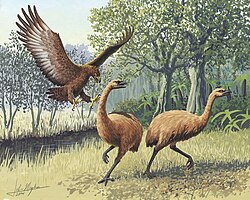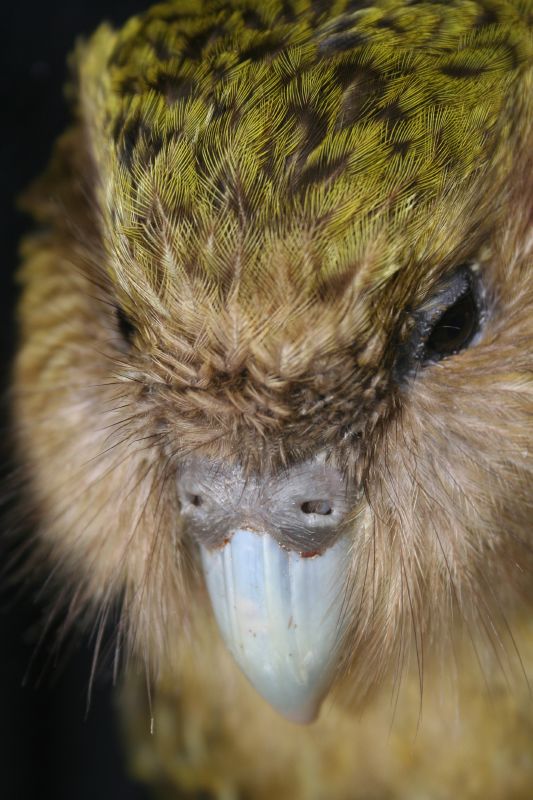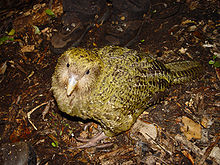Guys, no. Stop treating natives like they are/were some sort of holy people that can do no wrong. Yes, white people have backhanded everyone at some point in history. We're douchebags. Most of us feel some level of 'sorry' for the crimes that came along with our skin color. There, happy?
That does not in any way absolve the natives from their own crimes. They make/made war just like white people do/did. They kill animals and make awesome clothes out of them, just like rich white people. Ever wonder why the mammoths died out LONG before Europeans got to the U.S.? 'Natives' got them all.
They are humans. Therefore, they will kill flightless birds that are basically really large chickens, messing up the ecology just as much as any other race out there.
New Zealand used to have a bird that could give the elephant bird a run for its money called the moa. Moas were wingless ratites that, before the advent of man, had no natural predators besides a giant eagle. It was like Alfred Hitchcock's The Birds meets Jurassic Park.

They revived a couple of Haast's Eagles just for Gandalf.
Then the Maori - considered native people by the Europeans - came with dogs and wreaked havoc on the bird-dominated ecosystem. When they talked about moas and the Europeans wanted to see some, an awkward "uuuhhh..." probably followed.

This is not about the moa. This is about a rare parrot so desperate for some lovin' that it humped a photographer's head:
The Kakapo (Strigops habroptila) is a huge, flightless parrot native to New Zealand. It is nocturnal, herbivorous, and can live for up to 120 years. For a bird, it has an exceptional sense of smell and gives off an odor itself. The Kakapo is the only parrot that engages in lek mating, which you can see more about in the hammerhead bat and prairie chicken entries for if you so desire.

As with the elephant bird and cassowary, these guys are excellent seed dispersers. Whole 'kakapo gardens' have been made where the birds reside.
When humans first came to the island, the kakapo was considered the third most common bird on all three islands of New Zealand. As of right now, there are only 122 kakapo parrots remaining.
Not 10,000. Not 9,001. One hundred and twenty-two birds. Each and every one has a name.

That is a really small number. To put things in perspective, the current amount of giant pandas in the wild is 1,590, with the possibility of a thousand more unchecked individuals. You could fit every single Kakapo out there in a room. The birds are currently on two predator-free islands.
You have probably guessed by now that humans were the cause of this bird's sudden decrease in numbers. As previously stated, there were no mammalian predators at all before humans came to New Zealand.

(We won't even get into what the hobbits did.)
The Kakapo, despite looking dorky, cute and helpless to us, was remarkably well-adapted to avoiding the native predators on New Zealand. For starters, it evolved nocturnal behavior; the only nocturnal predatory birds are owls. Its feathers camouflage it well against the forest floor, and if it senses that it has been spotted, the Kakapo will promptly freeze like a deer caught in headlights. This works wonders when your main enemies are visual predators looking for movement.
For those of you who know absolutely nothing about how mammals hunt, dogs rely more on their senses of smell and hearing than vision. Also, they can hunt at night. Shit. (Later, cats and weasels were thrown into the mix, too. See, the Europeans didn't help the issue, but they were not the first people to screw New Zealand up.)
Wait a minute, these dogs belong to the natives, right? Surely they must be doing something for the Great Spirit above by hunting flightless parrots.

Too cute to die.
Uh...no. Not really.
To be fair, there is not much food on an island like New Zealand. The Kakapos were one of the few sources of good meat. They were also apparently a good source of decorative feathers for capes and, disturbingly enough, had their heads used as earrings.

No luck with the earrings.
So Kakapos were made into capes, earrings, and food. Lovely. How innocent are 'native' humans looking, now?

No comments:
Post a Comment